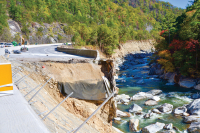Logging watershed is just a bad idea
To the Editor:
In the early 20th century, the Waynesville Town Board purchased the Allens Creek Watershed to assure that the town would have a high quality drinking water supply for future growth and development. Unfortunately, the people considered the board a bunch of spendthrifts and fired them all at the next election. During the ensuing years, various boards allowed logging in the watershed, often with disastrous environmental results. Near the close of the century, the public did not support any kind of logging. Soon the watershed began a remarkable natural recovery from the past logging scars.
By the 1980s, the citizens of North Carolina, and their state government, were becoming alarmed at the loss of quality drinking water supplies throughout the State. Waynesville’s Allens Creek Watershed was given the state’s highest quality drinking water classification — a WS-1 — because of its own outstanding natural recovery and removal of man-made forestry impacts. The original spendthrift board members are now considered historic heroes.
Much to the surprise of many citizens, the 2004 board announced that it favored limited logging in the watershed. A large number of citizens did not agree, and presented to the board a 600-signature petition, protesting any type of tree removal from the area.
Regardless of the public’s feelings, the board moved forward — with taxpayers money — funding a Western Carolina University flawed “Healthy Forest Study Plan” to selectively log the area. Most of the 2004 town board members ran for the 2008 board, among other goals pursuing the “WCU Healthy Forest Plan” agenda.
Concerned about the future potential danger to the watershed, I ran as a 2008 town board candidate. Although I garnered more than 800 votes, I could not overcome board coalition to obtain a seat. This failure has only encouraged me to fight harder to protect our pure drinking water for future generations.
In the town’s October 2010 report, as I explained and predicted above, the mayor is now requesting public support for the board’s “Healthy Forest Watershed Management Plan.” Public comment will be accepted through Nov. 12.
The board’s present justification to log the decadent, old white pine plantation makes no sense nor has scientific validity. Every citizen, scientist, school child, and informed environmentalist should be speaking out against the proposed plan.
Tell the board to abolish its “Healthy Forest Management Plan” and leave the Watershed to its own ecology. If, however, they follow through with their present stubbornly, greedy plan, then follow the money trail. The Allens Creek Watershed is not a cash cow.
Charles Miller
Waynesville





